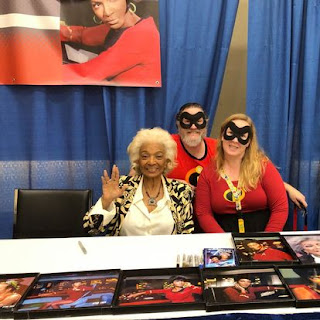Network Television and Star Trek
Star Trek: The Original Series benefitted from the business of television but not necessarily from business "as usual." The first pilot for the series, The Cage, was deemed by network exes to be "too cerebral." Rather than scrap the series, however, they took the unprecedented step of commissioning a second pilot. Changes like more colorful costuming, storylines featuring more action and adventure and, crucially, a recast of the lead role to showcase William Shatner's zest for the part of Captain Kirk, created a new show. This reimagining of Star Trek fulfilled the network's goal of a "family-friendly" show that would keep viewers watching during those all-important commercials.
Star Trek also had the good fortune to be produced by a very supportive company, DesiLu Productions. Its owner, Lucille Ball (one of the only women to own her own production company at the time), was so devoted to the success of the show that when her board balked at its considerable cost, she overrode them. She even endeavored to keep costs down by assisting on set at the end of the day when shooting had wrapped on one of the pilot episodes.
Despite a respectable viewership, Star Trek didn't measure up to other very popular shows of its time and it was canceled after two seasons. It was famously saved for a third season by a fan-driven letter-writing campaign. Unfortunately, Desilu was acquired by Paramount in 1967 and Star Trek lost the advocate it had in Lucille Ball. It was ultimately canceled after the third season.
The cancelation came just before the advent of the use of demographics to inform network television decision-making. Had the network realized that the show was, in fact, attracting a highly-desirable younger audience, it likely would have been renewed.
Star Trek's network-television journey, then, is characterized by anomalies. That second pilot, dedicated female producer, and third season won by fans all helped create the show that we know and love today. (The significance of the third season can't be overstated, either, since that's where Trek got its syndication-worthy episode count.). And, if only the use of demographics had become commonplace a few months earlier, we may have had four or more seasons of The Original Series on which to build this universe and franchise.
(Most of the info here is assimilated from the class lectures, with some stuff from Memory Alpha thrown in. I expect that I'll be updating with more thoughts after I finish Inside Star Trek.)





Comments
Post a Comment